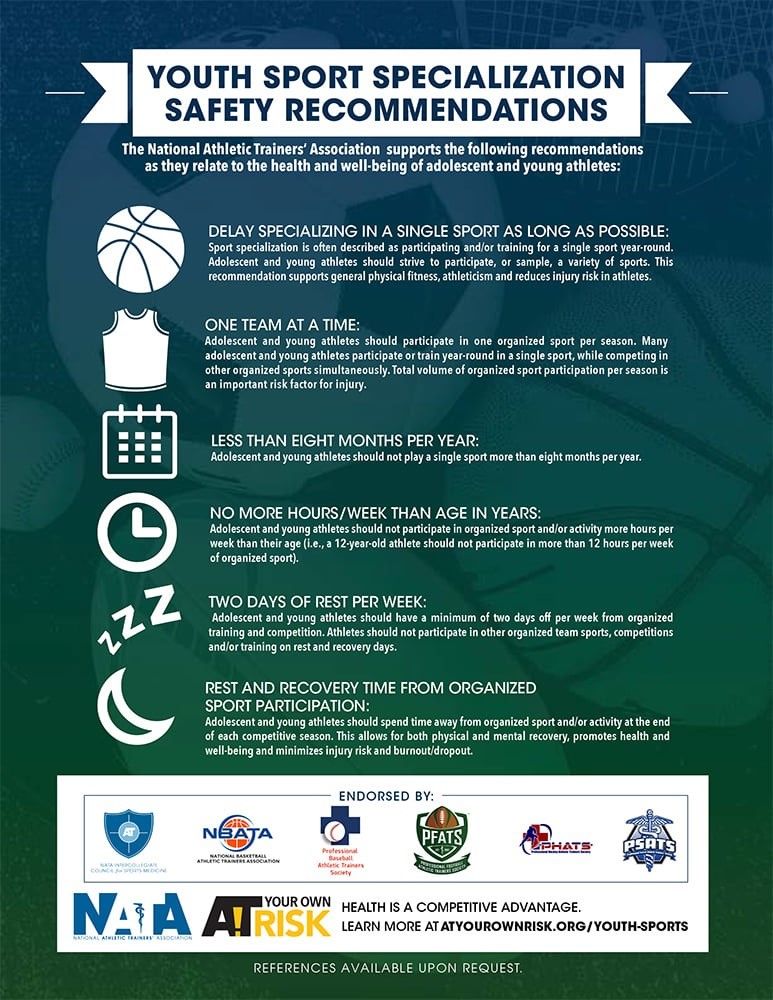At Resurgens
Orthopaedics, we work hard every day helping athletes of all ages recover from
injuries so that they can get back to playing the sports they love. Today, we'd like to focus on our work with
youth athletes. When a young person
comes to us with a sports injury, it's often because they pushed themselves
beyond their limit while training or playing in games. If you or someone you know is a youth athlete
who's concerned about injuries, the National Athletic Trainers' Association
(NATA) has released the following guidelines to help you decide on the
appropriate level of training and recovery time for young people who play sports:
Delay Specializing in a Single Sport for as Long as Possible
While you may
think that better performance comes from athletes who start specializing at a
young age, it can actually be detrimental for them to start training
intensively in one sport as children. By
encouraging your youth athlete to participate in a variety of sports, they'll
actually end up becoming a well-rounded player who's less likely to become
injured from over-training specific muscle groups.
One Team at a Time
Training all year around or playing on multiple teams per
season can be a big risk factor for injury.
NATA recommends that young athletes should only participate in one
organized sport per season, and that they only join one team per season to
avoid overtraining in one specific area.
Less Than Eight Months Per Year
No matter what sport a youth athlete plays, it's
always good to have some time off for rest and recovery. Stick to the "One Team at a Time" rule and be
sure that training is limited to eight months out of the year.
No More Hours Per Week than Age in Years
NATA would like you to use this rule of
thumb to determine how much time youth athletes should spend training. As an example, if they're 15, they should
spend no longer than 15 hours per week training. Not only will this help them prevent
injuries, it will ensure they can maintain a healthy balance between life,
school, and sports.
Two Days of Rest per Week
Training to compete in youth sports can be taxing on
both the body and the mind; that's why it's important for young athletes to
have at least two days per week to rest.
Rest and Recovery Time
In addition to having some on-season recovery time, youth
athletes should also get some time to recover physically and mentally after the
season is over. This will give the
muscles and other tissues time to heal and can also help prevent the kind of
mental burnout that could cause youth athletes to give up sports for good.

Representatives from a range of athletic organizations agree with NATA as well. James Collins, President of the Professional Football Athletic Trainers Society said, "The players who make it into the NFL are significantly more likely to have played multiple sports while growing up. In fact, almost 90% of 2018 NFL Draft picks were multiple-sport athletes."
Sean Kupiec, President of Professional Soccer Athletic Trainers Society, agrees, saying, "It is important to remember the risks associated with sports specialization, especially at an early age. As athletic trainers, we want to educate parents and coaches regarding best practices for the long-term health of these young athletes."
Trainers from many different specialties agree that it's crucial to prioritize the long-term physical and mental health of youth athletes over getting athletic scholarships and spots on professional teams. At Resurgens Orthopaedics, we support the NATA's recommendations and encourage you to use them as guidelines for yourself or the youth athlete in your life. We hope that you'll carefully consider these recommendations as you plan for the future and that you'll make healthy choices about your training.